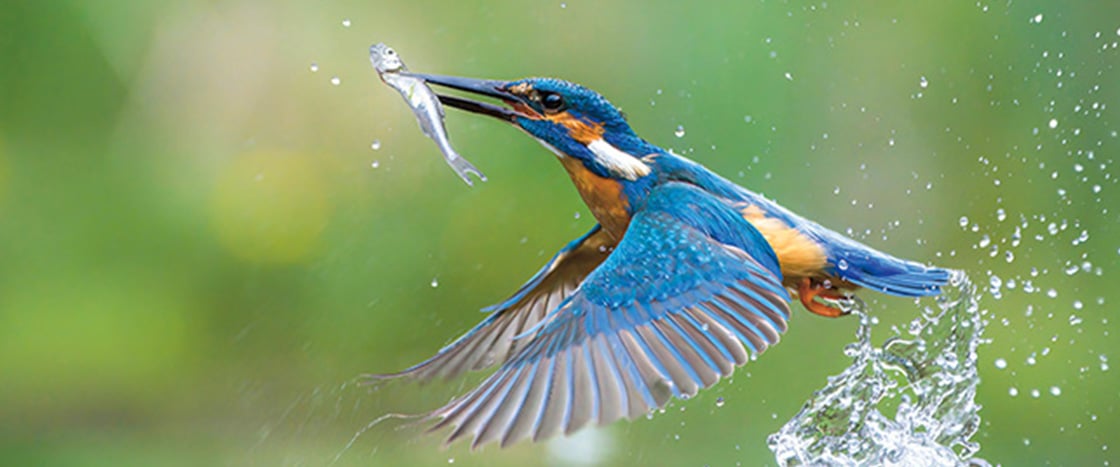A rattling call pierces the air. A bird hovers, beating its wings, staring into a murky pond. Suddenly, it dives into the water, creating barely a ripple. The bird emerges carrying its prize—a squirming fish—to a nearby branch. THWACK! It smacks the fish against its perch, then gulps it down.
This bird is a fierce predator called a kingfisher. Kingfishers come in many sizes and colors, but their bodies are similar. They all have a large head, a long bill, short legs, and a stubby tail. Some kingfisher species have an amazing ability to spot underwater prey from a great distance—up to 90 meters (295 feet).
But despite their name, many kingfishers don’t catch fish. Most species hunt small animals like frogs and lizards. One species uses its bill like a shovel, digging in the soil for worms. Read on to learn more about this fascinating group of feathered hunters.

